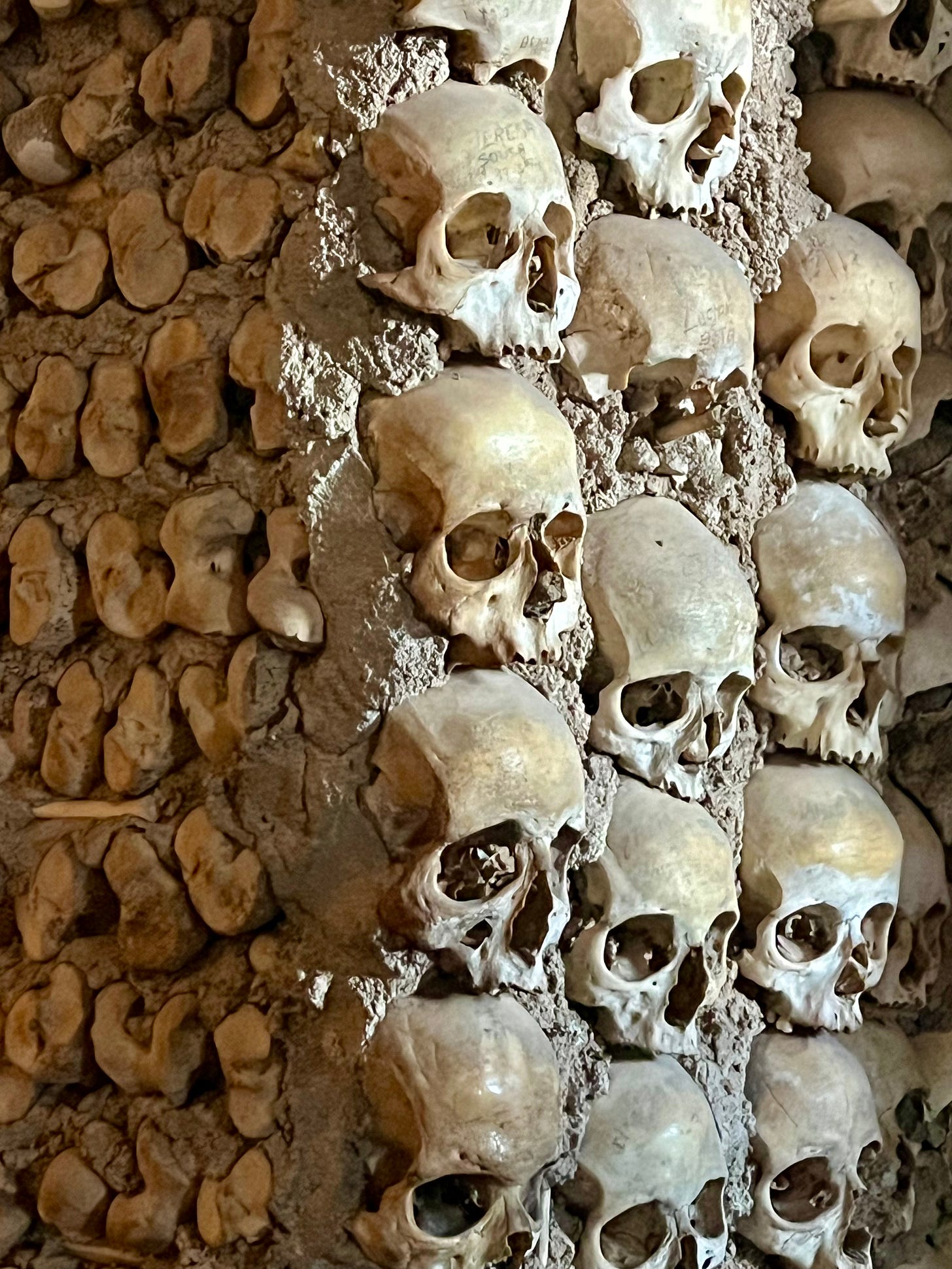Dear Reader,
When I was in college I had an English professor who kept a skull on his desk.
It was his momento mori, he told me, a reminder of the inevitability of his ultimate demise.
Needless to say, he wasn’t the cheeriest of profs.
He told us that he rarely gave A’s, and I didn’t get one from him, but I did learn to be a better writer and to appreciate the work of Flannery O’Connor and Southern Gothic writers in his classroom.
For a long time I carried an anthology of Flannery O’Connor’s works around me like a Bible, tucking it in the bookshelf of every new domicile with its yellow highlighter marks and underlined pencil stripes.
I thought of Dr. Somerville as I stared at the bones in the bone chapel of Evora, Portugal. I thought he would like it.
It certainly was ghoulish enough.
“This would be a good place for anatomy students,” I muttered while trying to figure out whether I was looking at femur, patella, or tibula bone cemented into the wall.
An inscription at the entrance reads, “We bones in here wait for yours to join us,” and the signs inside invite you to stay as long as you can stand it, while contemplating your own mortality.
The monks who created it hoped it would turn wealthy Evorians away from materialism and bring them to God.
“Really, it’s not too bad,” I said to my friend Maria (visiting from Montana). “The creepiest part of the whole thing are the mummified remains of the people up front in the glass boxes.”
Unlike the 5,000 other skeletons embedded in the chapel’s walls, the remains of the Franciscan monks who constructed the chapel are preserved in a small white coffin at the front.
What happened next was so absurd and beautiful I had to write it down. [Unlock to read more and find out where to drink the best wine and eat the best food]”
Keep reading with a 7-day free trial
Subscribe to From Montana to Portugal to keep reading this post and get 7 days of free access to the full post archives.




